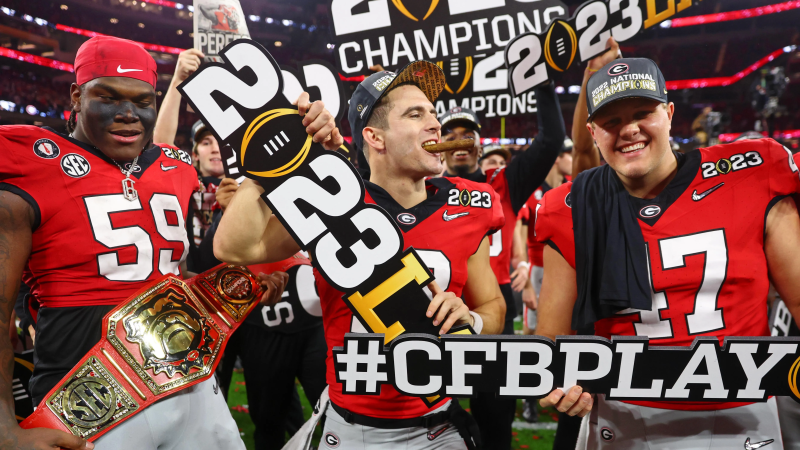NCAA President Charlie Baker proposing new subdivision that will pay athletes via trust fund
NCAA President Charlie Baker on Tuesday sent a letter to Division I members proposing the creation of a new competitive subdivision whose schools would be required to provide significantly greater compensation for their athletes than current association rules allow.
Under Baker’s plan, “within the framework” of Title IX, the federal gender-equity law, schools in this new group would have to “invest at least $30,000 per year into an enhanced educational trust fund for at least half of the institution’s eligible student-athletes.”
Baker’s proposal also involves the schools in the new group committing to work together to “create rules that may differ from the rules in place for the rest of Division I. Those rules could include a wide range of policies, such as scholarship commitment and roster size, recruitment, transfers or” policies connected to athletes’ activities making money from their name, image and likeness (NIL).
Across all of Division I, Baker says the association should change its rules to “make it possible for all Division I colleges and universities to offer student-athletes any level of enhanced educational benefits they deem appropriate. Second, rules should change for any Division I school, at their choice, to enter into name, image and likeness licensing opportunities with their student-athletes.”
The proposal comes a little over nine months after Baker became the NCAA’s president, moving into the job amid a time of considerable tumult within college sports. In addition to multiple legal battles over athlete compensation, the association has been facing growing unrest from the schools that have the greatest revenues and expenses.
Under pressure from the multiple antitrust lawsuits and from some members of Congress, athletics administrators at those schools and their conferences have grown increasingly open to the idea of providing greater benefits for athletes as they collect billions of dollars in TV money and have coaches who are being paid millions of dollars annually and tens of millions in buyouts if they get fired.
However, for the broader membership within the NCAA’s Division I, there have been concerns about the financial and competitive consequences of this, particularly against the backdrops of Division I rules now allowing athletes to transfer once without having to sit out for a year, as used to be the case, and now allowing athletes to make money from the NIL.
In his letter Tuesday, Baker includes a detailed look at all of these issues and tensions, then states: “Therefore, it is time for us – the NCAA – to offer our own forward-looking framework.”
Baker wrote that he looks forward to gathering reaction and input from school officials and athletes about his proposals, but added, “moving ahead in this direction has several benefits” – and he proceeded to list 10 reasons for going forward with his framework, including:
►Giving “the educational institutions with the most visibility, the most financial resources and the biggest brands an opportunity to choose to operate with a different set of rules that more accurately reflect their scale and their operating model.”
►It provides schools “that are not sure about which direction they should move in an opportunity to do more for their student-athletes than they do now, without necessarily having to perform at the financial levels required to join the [new] subdivision.”
►It would allow other Division I schools “the ability to do whatever might make sense for them and for their student-athletes within a more permissive, more supportive framework for student-athletes than the one they operate in now.”

Disclaimer: The copyright of this article belongs to the original author. Reposting this article is solely for the purpose of information dissemination and does not constitute any investment advice. If there is any infringement, please contact us immediately. We will make corrections or deletions as necessary. Thank you.







